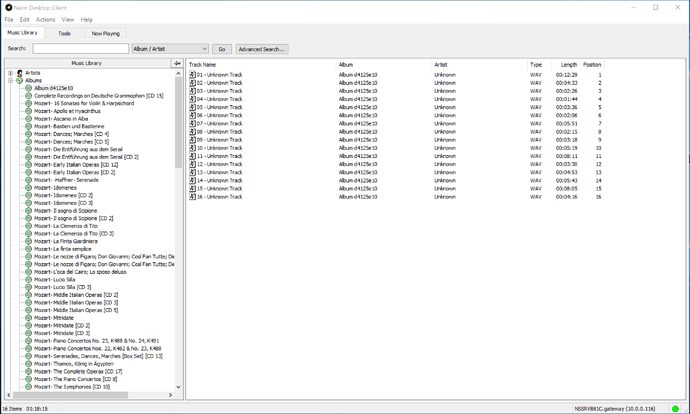When Roon first came out I hoped it would have solved the massive problem of making sense of the metadata for classical music but alas, as we are human, that’s too much to ask of anyone.
I’ve tried various music storage solutions ranging from an early Antipodes all in one unit, Aurender X100L, Aries feed from NAS, Bryston BDP-1 and USB drives, ripping CD’s using software, and last using a Naim Unitiserve device which while ripping bit perfect copies saves things as wav files with its own database management scheme for the metadata.
Auto ripping devices are geared for the mass market, or in Hi Fi, a market of nit pickers, and are not really designed for classical music ripping and metadata management. I’ve tried Musichi, etc, and really, ripping the cd’s manually and then editing them is not how I want to spend time.
So I had a long hard think and wondered if I ripped all of the cd’s into the Naim Unitiserve, and then used Roon to manage the metadata, would life become simpler?
Will Roon be able to handle wav files and the implicit metadata embedded in the album and track info? I have no idea at present but as I am ripping the latest Mozart 225 album, which 225 cd’s, Naim correctly identified the CD 70% of the time, and otherwise assigns a different set of metadata to the remaining 30%, this info being on the CD’s making the collection in the first place. (Laziness of Decca etc to mix and match CD’s with different metadata). (Having an enormous green box filled with CD’s filed into 4 packs, makes the physical playing of the music interesting, and rather the music should be transferred to the Roon experience. Which is why I am doing it).
Whether it will be a success is another matter.
PS. One thing I am immensely annoyed with is a recent Australian ABC classical release of 8 CD’s. the Classic 100 Voice, and the metadata is AWOL. Typical government operation. Unbelievable.
